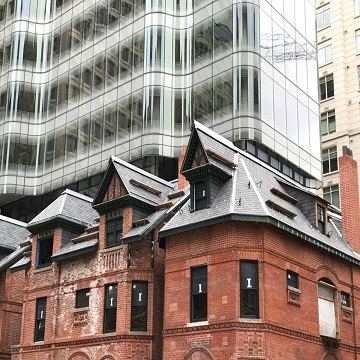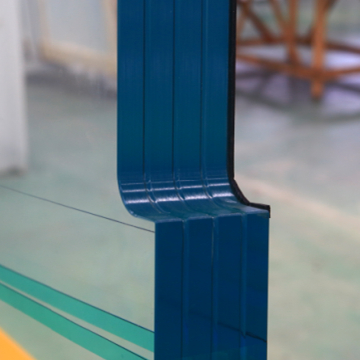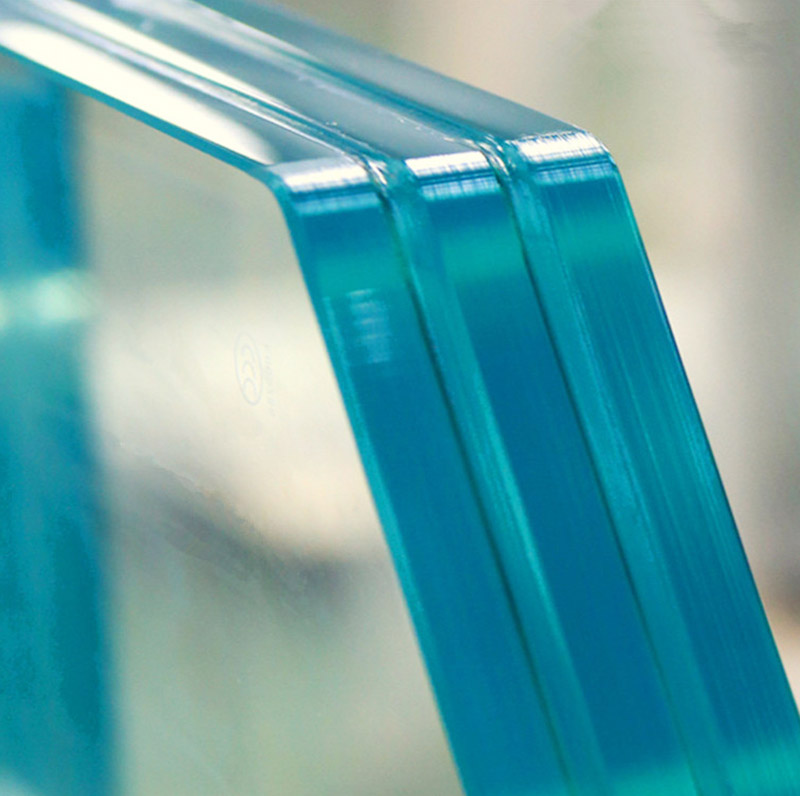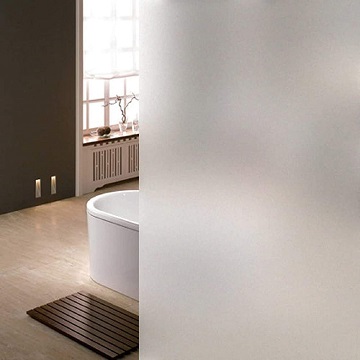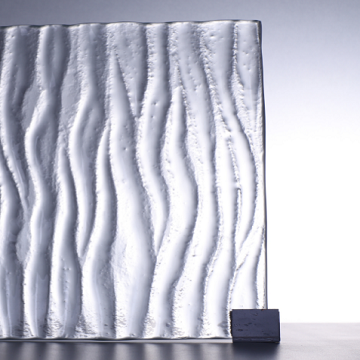Fins are used as decorative (aesthetical enrichment of the facade), functional (sunshade) and structural (stiffening and load-bearing) elements of the facade.
Abstract
The use of glass fins constitutes a recently emerging trend in the façade industry. Fins (ribs) could be defined as long glass strips mounted perpendicularly to the surface of the façade. Fins are used as (i) decorative (aesthetical enrichment of the facade), (ii) functional (sunshade) and (iii) structural (stiffening and load-bearing) elements of the facade. The overall trend of using glass fins is a result of the abundance of proper quality glass, that allows for safe use of relatively small elements that are point mounted or fixed in a different way to the surface of the facade. This glass fin trend deserves a review, illustrated with the on-site made photographs showing different areas of application. The given review of the application of glass fins is based on a general morphology study of transparent facades that the author conducted through the year 2017-2019, and including the position of the fin, the orientation of the fin, and the transmissive qualities of the fin – transparent, translucent and screen-printed. Fins could be also addressed as a formal articulation element strategic from the point of the building’s architectural form.
1. Introduction
Contemporary architectural transparency (understood as the optical property of transmitting the light through the material) is constantly being redefined and, over the last decade, new design trends related to transparent façades in architecture have been developed. Those trends are the results of the dynamic technological progress and of the advancement in the field of materials science. Transparency is no longer limited to specific functions (e.g. illumination of the interior) but has become a tool of formal expression itself. Apart from the standard understanding of transparency as the use of light-permeable materials in façade design, one can find other innovative and creative interpretations. Glass fins became one of the elements of this abundant transparency trend around the 1950s and are rapidly developing now.
2. Methodology
This brief overview of the application of glass fins is based on general morphology studies of transparent facades that the author conducted through the year 2015-2017 and published in 2018 [1]. This allowed for the isolation of one of the main trends – a glass fin trend that, as the author believes, deserves a deeper analysis. Trend’s description given in this paper is followed by on-site made photographs showing different areas of application in the completed buildings.
3. Glass fin trend
Glass fins (also called ribs and lamellas) could be defined as long glass strips mounted to the surface of the façade. The fins are mounted in both: horizontal and vertical position and at the different angles in the relation to the façade’s surface (usually perpendicularly). Fins are used as a structural, functional and decorative element of the facade. The occurrence of the glass-fin trend is obviously related to the development in the area of glass fittings, mounting, and lamination. This allowed narrow strips to be manufactured and safely point- or edge-mounted to the façade at a height.
4. Glass fin as a structural element
This short preview offers no space for the detailed presentation of structural characteristics of glass fins, but at least few issues might be discussed. Structural glass fins are mainly the result of the architect´s and their clients´ strive to create so-called all-glass facades. The use of this system dates back to 1950s when fins were used to stabilize shop windows with one of the first application at the Maison de la Radio in Paris (arch. Henry Bernard, 1952-1963) [2]. Glass fins from the structural point of view replace the opaque vertical mullions in classic curtain-wall façade systems.
The successful application of this system in the first buildings – e.g. Willis Faber & Dumas Headquarters by Foster and Partners, where the façade is partially hung from above – using glass fins – facilitated the spread of the system and pushed the technology for the creation of new developments. Glass fins are connected to the façade glazing by the means of patch fittings, corner connections or point mount fittings, available systems are numerous offering the fin height up to 12-15 meters, reaching 18 m is some conceptual proposals [3]. The patch fittings and point-mounting systems were introduced subsequently. Steel plates are also laminated between the layers of glass forming glass fins. Plates are later used to connect elements of the facade and to provide the proper load transfer.
The most challenging aspect of a glass-fin wall “occurs when the span is too great to be accommodated by a single piece fin, and a splice detail must be developed to create a fin comprised of multiple glass pieces” [4]. Initially, longer fins had to be connected by the means of patch plates to fix smaller fins together, but the newest laminated tempered glass fin technology even allows for laminated fins to be produced over 40 feet tall in one piece (e.g. by Sedak).
Structural engineers use glass fins as the means of stiffening the structure. Their orientation is usually perpendicular to the surface of the glazed façade. Fins are used to make glazed walls more rigid, to reduce deflections, and to improve bearing capacity of horizontal loads – they usually “carry the wind positive pressure and suction forces” [5]. Jan Wurm writes, that from the structural point of view, fins are “normally suspended and any movements in the primary structure are accommodated at the bottom support of the fin” [5].
Fins are usually made of laminated glass but might be also monolithic. Besides the structural differences, there are some visual constraints concerning the use of laminated fins as “these systems may seem thicker than monolithic fins when viewed from the inside on an angle or from directly behind even with ultra-clear, low-iron glass” [2]. Even if the interlayer used to laminate the glass is clear, it will still be somewhat visible from inside. This effect could be seen in the Apple Store Boylston Street in Boston (arch. Bohlin Cywinski Jackson, 2008), where glass fins are manufactured from 5 panes of glass with structural interlayer material, visibly affecting the transparency of this element (see Figure 1). In this particular case, the fins are rigidly connected with the beams forming one continuous element (a portal frame). Although a beam looks similar to the fin, it is subjected to bending force and resulting buckling, thus has to be designed differently. The elements are connected by the means of polished stainless steel fittings.
5. Glass fin as a functional element
Functional glass fins are used as a shading elements, thus the fins become louvers. Usually horizontally oriented, they block the sun and allow users of the building for the uninterrupted outside views. Louvers used as a shading require more maintenance, as the horizontal position facilities the dirt accumulation. In some cases, horizontal glass louvers are motorized and adjust to the sunlight angle. One of the most complicated mechanical glass louver retracting systems was developed at the end of the 1990s in Zurich, at the Tamedia Ernst-Nobs Platz Headquarter (arch. Atelier WW, 2001). Opaque glass louvers are motorized using the pantograph systems that lowers them into the correct position by the means of regulating the length of steel cables. The bona fide glass transparent fins are used as a support for a guiding rail for this mechanism, not as a part of the light scattering system (see Figure 2).
Fins for shading are also used in a vertical position, this makes them less prone to the dirt and soiling. External vertical glass fins are also used as a light diffusing element and are therefore called baffles (performing the function of the so-called vertical light shelf). For even more effective light scattering vertical glass, fins are manufactured as translucent elements, e.g. sandblasted or frit-printed as “when they are infused, they can help evenly distribute light without reducing the total amount of light significantly” [4] and might contribute to the overall glare reduction in the office rooms e.g. like in Canada Place at Canary Wharf, (arch. Zeidler Partnership Architects, 2003), see Figure 3.
Sandblasted fins located on the northern façade of Federal Office Building in San Francisco (arch. Morphosis, 2007) are used as light redirecting devices (see Figure 4a) while screen-printed fins on the western façade of INES – French National Solar Energy Institute (arch. Atelier Michel Rémon + Agence Frédéric Nicolas, 2013) are used as both: light redirection (during the peak hours of the day) and shading device (at the afternoon – see Figure 4b). Glass fins in INES could be pivoted around the vertical axis by the means of electric actuators (one actuator controls four fins at one floor height). A similar system was applied in Galizia Fashion Plaza building, in the German city of Metzingen.
Glass fins are also used as a PV cells carrier producing the so-called shadovoltaic element. PV cells are usually laminated between two panes of glass what facilitates the process of production and protect the cells from the influence of weather. The installation orientation might vary depending on the prospected outcome. In the Swiss Tech Convention Center (arch. Richter Dahl Rocha & Associés, 2014) dyed transparent cells are installed in a form of glass lamellas in a vertical orientation and slanted at a slightly oblique angle, allowing for easy airflow but still remaining visible from the inside of the building (see Figure 5).
Conclusion
The fins have undoubtedly become parts of the contemporary glazed facades, fulfilling many functions and offering multiple visual effects. Those could be used as structural, functional and decorative elements. As the structural glazing develops over time, the fins are systematically included in the facades as a load-bearing element, allowing for the replacement of the non-transparent mullions. At the same time, the fins are shading and energy harvesting elements, while simultaneously producing an interesting optical outcome. The aesthetical role of the glass fins cannot be underestimated as fins are frequently used as a sculptural element of the façade, emphasizing its rhythm and defining proportions.


